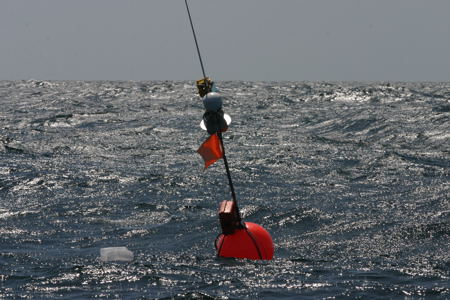Song of the Whale was designed to be easily adaptable allowing the vessel to be configured according to the needs of a particular field project or expedition. Listed here is the typical equipment inventory used during a visual and passive acoustics field project.
Observation platforms: SOTW is fitted with a two person 11 metre high crow’s nest (accessed by steps on the mast) and a four person elevated A-frame which provides a 5 metre eye-height for visual observation (accessible by a ladder from the aft deck).
Hydrophones:
· 2 x 400 m tow cables: Streamed from outriggers at the stern of the vessel which keep the arrays clear of the wake. Each tow cable is fitted with a “wet connector” allowing different hydrophone tails to be fitted as required.
· Hydrophone tails: SOTW typically carries tails covering low (0 to 40,000 Hz) and high (20 to 200,000 Hz) frequencies allowing detection of all species of marine mammal from ultrasonic harbour porpoise (clicks between 120-150 kHz) to infrasonic blue whale calls (<50 Hz). Hydrophone tails can be built or modified by MCR to suit a projects specific requirement.
· Calibrated hydrophone: RESON TC 4032 Omni-directional calibrated hydrophone. Used to characterise levels of noise, including whale vocalisations, ship and background noise.
· 2 x free-floating archival acoustic buoys: Each housing a single hydrophone on 30 m of cable, TASCAM recorder, archival GPS, AIS transmitter and radar reflector. The buoys are used in combination with hydrophones deployed from the boat for triangulation of mid and low frequency cetacean vocalisations.
Computer room: Houses five desktop computers, three of which are used for acoustic processing, photographic identification and video editing. The remaining computers are dedicated to navigation and communications. High and low frequency digital sound cards and buffer amplifiers process data fed from the hydrophone arrays.
Photographic equipment: SOTW is equipped with Canon DSLRs, wide angle, zoom and telephoto lenses. Used for photographic identification, length measurement and species identification. Cameras may be fitted with a laser mount, comprising two laser pointers. Used to project two dots a fixed distance apart onto an animal when photographed. This enables the relative size of the individual to be calculated and therefore its age class and sometimes gender.
Video Equipment: Two sets of video range tracking equipment comprising a monopod on which a HD video camera is mounted along with a pair of 7×50 reticule binoculars. This equipment is in conjunction with a CCTV system on the A-Frame observation platform to derive accurate range and bearing information to animals at the surface to study movements and surfacing / dive behaviour.
SOTW has two pole-mounted GoPro cameras used to video the underwater behaviour of whales and dolphins when close to SOTW.
SBE 19plus SEACAT Profiler CTD: Used to measure Conductivity (salinity) and temperature at depths up to 7000 meters.
Skin and faecal sampling kit: nets, chemicals and sampling bottles to collect and store sloughed skin and faecal samples for hormone, stable isotope and DNA analysis.
